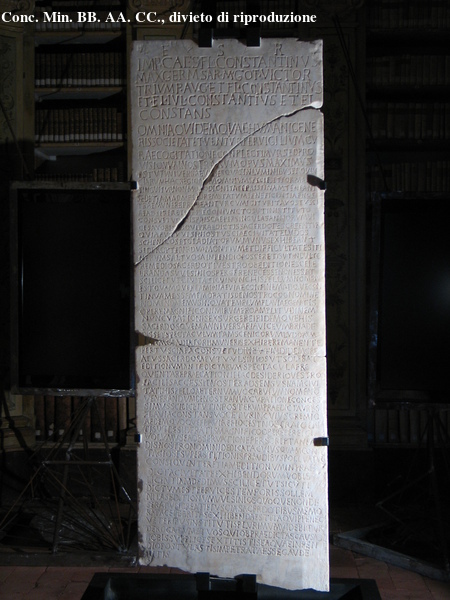This document from Hispellum is part of a formal reply of the Emperor Constantine to the people of Umbria, asking to celebrate a Festival in Umbria, and not in Volsinii (Bolsena) where the festival was held since the unification of the two regions. The permission thus granted was accompanied by other favours of the Emperor to this city. The request from Umbria also included the construction of a Temple and a change of name for the city, which was to be named after the Flavian dynasty, both of which were approved. The striking part of the document is that it proves the empire wasn’t Christian by that time, and that the first christian Emperor allowed for a temple to be built for him and his family, for games etc. This document is thus a fundamental piece of evidence in the discussion on the religious policies of the Roman empire at this turning point in its history. However the Emperor asks that “the shrine dedicated to our name is not to be polluted with deceits of any contagious superstition” and this might be a confirmation of what we know from Eusebius about the abolition of sacrifices by Constantine.
Links
- Droit Romain
- EDR136860 with translations in EAGLEWIKI9494

